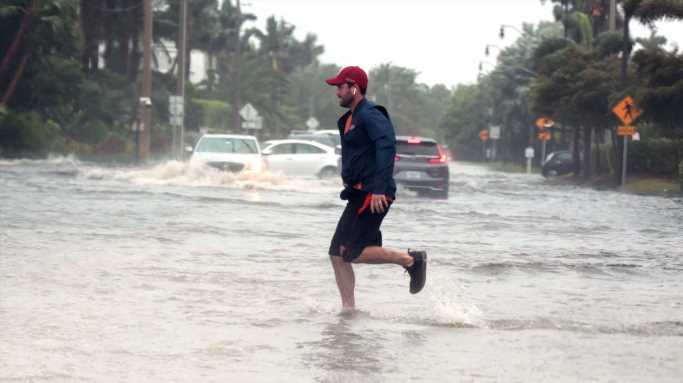We are more than two months into the Atlantic hurricane season, which goes from June 1 to Nov. 30, but there has only been one hurricane. As of the end of July, Tropical Storm Don briefly reached hurricane status the weekend of July 22 before losing strength. Of course, the end of the season is still a long way off, and like other climatological phenomena these days, hurricanes do not always behave as we expect them to, and post-season occurrences are not out of the question.
While the New England states may feel the aftereffects of major hurricanes, and the violent storms can even cross the Atlantic (Hurricane Ophelia swept over Ireland in October 2017), it is the states along the lower southeastern seaboard and the Gulf of Mexico that bear their brunt.
To determine the 35 most hurricane-vulnerable counties in America, 24/7 Wall St. consulted gutter services company Gutter Gnome’s study, 2023’s Most Hurricane-Vulnerable Counties. Drawing on data from the Federal Emergency Management Agency, the National Center for Disaster Preparedness, and the National Oceanic and Atmospheric Administration, the site developed an index for the 318 U.S. counties with a Hurricane Risk Score determined by the NCDP. The index comprises nine differently weighted metrics such as hurricane risk, hurricane history over the past decade, and expected annual loss from hurricanes provides a score out of 100, with higher scores denoting greater vulnerability. County population figures are U.S. Census Bureau estimates as of July 1, 2022. (On a more granular level, these are the U.S. cities where hurricanes would cause the most damage.)
Click here to see the most hurricane-vulnerable counties in America.
Not surprisingly, a dozen of the most vulnerable counties are in Florida, with almost all the rest in North or South Carolina. Georgia and Texas also have one county each. Some counties that have been ravished by hurricanes in the past did not make the list because the history metrics considered only the past 10 years. Most notably, Orleans Parish, Louisiana, which was all but leveled by Hurricane Katrina in 2005, but has been relatively calm ever since, is not on the list. (See these before and after pictures of the worst hurricanes in American history.)
While coastal counties are the most likely to be affected, being inland is no guarantee of safety. Several counties on the list are 100 miles or more from the sea. And while Texas appears here only once, its Harris County — home of Houston, the nation’s fourth largest metro area — stands to suffer the most financially from hurricanes, to the tune of more than $1.1 billion a year.
Sponsored: Tips for Investing
A financial advisor can help you understand the advantages and disadvantages of investment properties. Finding a qualified financial advisor doesn’t have to be hard. SmartAsset’s free tool matches you with up to three financial advisors who serve your area, and you can interview your advisor matches at no cost to decide which one is right for you. If you’re ready to find an advisor who can help you achieve your financial goals, get started now.
Investing in real estate can diversify your portfolio. But expanding your horizons may add additional costs. If you’re an investor looking to minimize expenses, consider checking out online brokerages. They often offer low investment fees, helping you maximize your profit.
Source: Read Full Article
